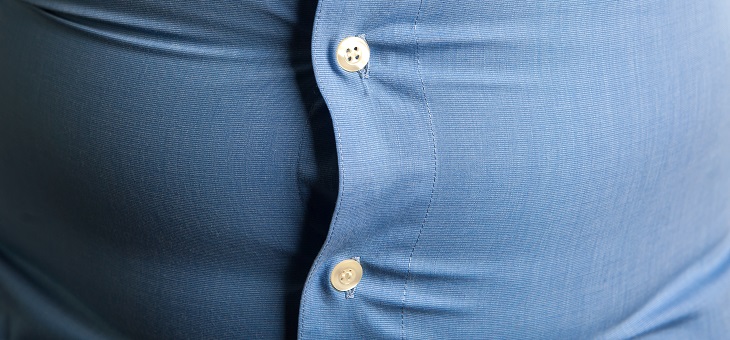Look down. Do it now. Can you see your toes?
What about your, um, well, your private parts? Can you see things clearly, or does your belly block the view?
You don’t have to be wildly overweight to find your tummy getting in the way, and it’s quite possible the ‘verandah over your tool shed’ may be no more than a small porch.
Nevertheless, the fat stored in that porch is not a good thing and you’re far better off without it, which, sadly, is easier said than done. It’s important, however, that you try.
Doctors call this belly blubber visceral fat and it’s the worst type because it can wrap itself around vital organs.
While some levels of visceral fat are acceptable, too much can lead to diabetes, heart disease and inflammation, to say nothing of making you sexually unappealing.
It’s usually caused by a combination of such things as poor diet, stress and a sedentary lifestyle.
There are no wonder foods that can eat away at this fat and liposuction is not an option because it doesn’t reach the abdominal wall where visceral belly fat resides.
Crash diets aren’t recommended, either, because they’re too brutal and almost impossible to maintain for long periods.
So let’s call our attack on belly fat ‘the tortoise and the hare approach’ – gentle changes to our lifestyle that don’t require marathon walking sessions, regular sessions with a personal trainer or a diet of nuts and fruit.
Research suggests that 30-second bursts of higher than normal exercise is better for you, and far more achievable, than prolonged exercise.
For example, on your next walk, power walk for 100 steps, then return to your normal pace. When you feel that your pulse rate is returning to normal, repeat the process three or four times, more if you can. Adding hills has the same effect.
The theory is that short bursts will benefit you more and mean you don’t have to be out there for quite as long.
If you pass an outdoor exercise area, try a sit-up, a push-up, maybe even a chin-up.
A study of middle-aged men showed that 20 minutes of daily weight training was better for abdominal weight loss than the same time spent doing aerobic exercises, such as bike riding.
Strength training has also shown to be good for women.
As for your diet, monitor your calorie intake and the types of fats contained in the foods you’re eating. The only way to really do this is to read the packaging or be well read. If you do this, you will discover that more fibre in your diet is a good thing and that sugar is bad.
For example, did you know that coconut flesh is good for you, but coconut milk is not so good. Low fat soy milk, if you can stand it, is a fantastic option poured over your breakfast cereal.
Salmon and sardines are good for you, as is most fish. Just make sure to avoid endangered species such as Orange Roughy and Bluefin Tuna.
As for alcohol, there’s no escaping calorie issues. Worse still, a few drinks often make you want to eat more, while the more time you send preparing a nice meal, the more you feel like doing it justice with a wine.
Do what you can. Two or three alcohol-free days each week should already be part of your dietary regime, anyway.
And if any or all of this seems too difficult, try this exercise. Make a list of reasons why removing the veranda over your tool shed is a good thing: prolongs life, improves flexibility, raises energy levels, makes you more appealing to the opposite sex…
Now list reasons why the veranda is good. No, we can’t think of any, either.
Is belly fat a problem for you? Have you tried, successfully, to get rid of it? What methods worked for you?
Related articles:
Live longer on a high-fibre diet
Generic medicines explained
Best and worst food from the deli
Disclaimer: This article contains general information about health issues and is not advice. For health advice, consult your medical practitioner.

